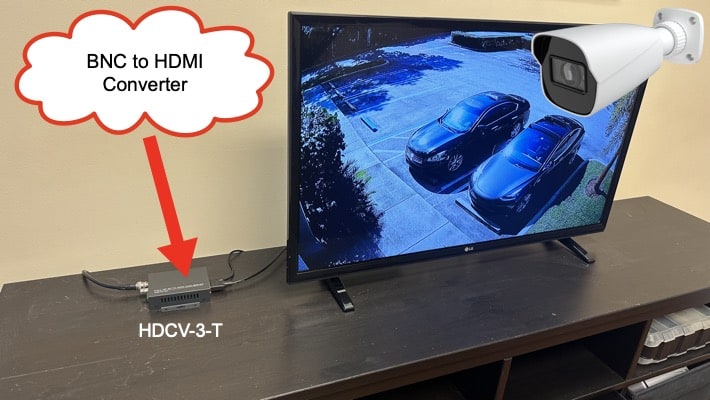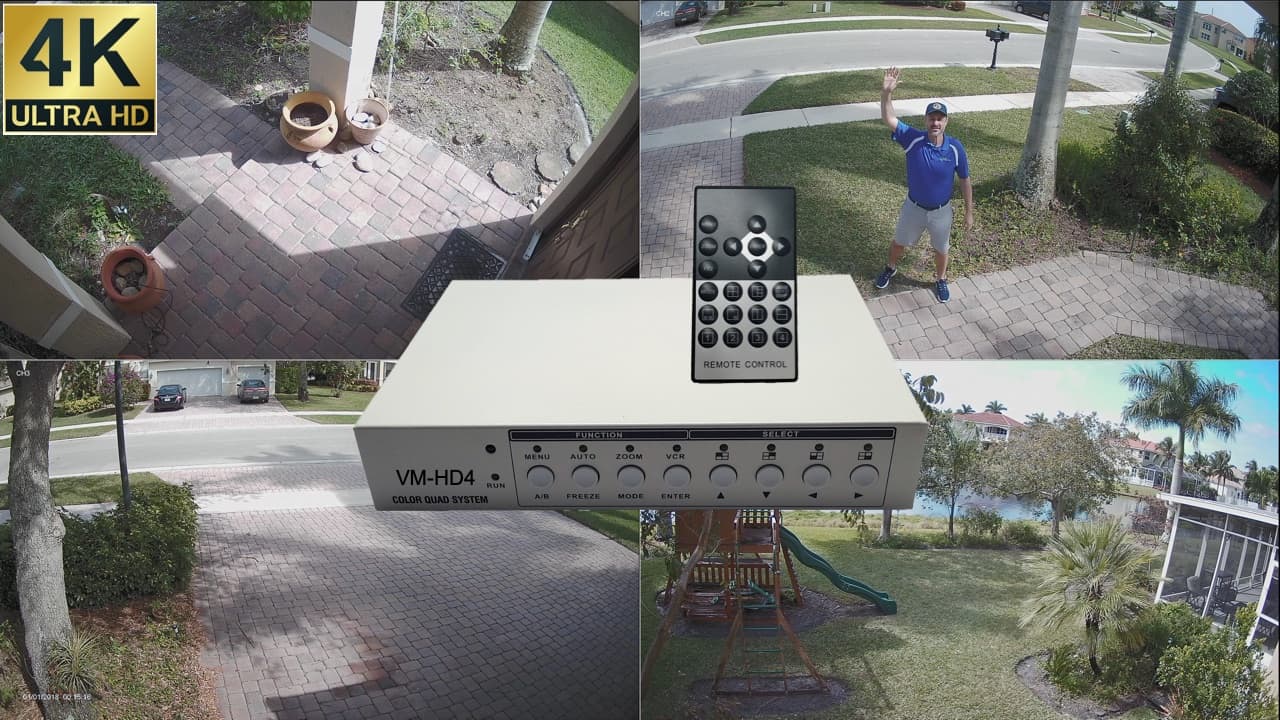How to Connect a Security Camera to a TV
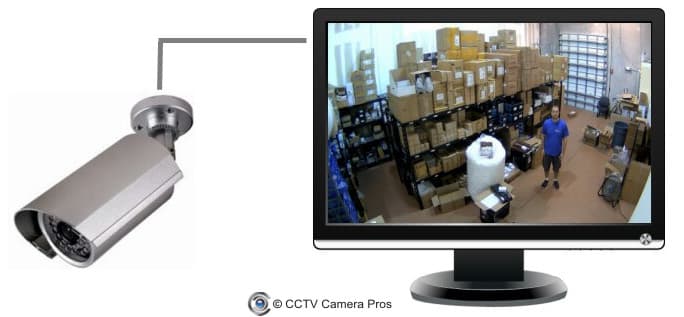
Some customers want to connect their security camera directly to a TV without recording to a CCTV DVR. These customer typically just want to display the live video feed from their CCTV camera on a TV monitor without recording any surveillance footage to a hard drive. This article will explain several ways to do this depending on the type of camera that you have, and if you are using a single camera or multiple cameras.
Solutions to Connect Camera to TV for Live View

You can find our
single camera and multiple camera live camera display systems here. In addition to the solutions you will find on that page, CCTV Camera Pros can also design a custom solutions for you based on your specific requirements. Please note that all of these solutions are for cameras that use coax cable and BNC connectors. These solutions will not work for network IP cameras. If you want to display IP cameras on a TV, you need to use an IP camera NVR.
Security Camera to TV Connections Solutions
- How-to connect a security camera to a TV video demo - This is our best solution for a single camera. Please watch this video!
- How-to display multiple security cameras on a TV - This is our best solution to display multiple security cameras on a single TV screen. All cameras connect to a a video multiplexer. This solution works for analog CCTV cameras and HD security cameras. CCTV Camera Pros has 4 channel, 9 channel, and 16 channel CCTV multiplexers available.
- How-to connect an HD security camera to a TV - Follow these instructions if you are using a HD-over-Coax / HD BNC security camera. Video format: AHD, HD-TVI, HD-CVI. Resolutions: 720p, 1080p, 3mp, 4mp, 5mp, 8mp / 4K.
- How-to display your security cameras on multiple TVs - Follow these instruction if you would like to send the video signal from one or multiple security cameras on multiple TVs.
- How-to connect an analog CCTV camera to a TV - Follow these instructions if you are using an analog CCTV camera (CVBS). E.G. 960H, D1, CIF resolution and you have a TV with an analog RCA video input.
If you are interested in high definition instead of analog, you may be interested in checking out these complete
TV display systems for HD security cameras.
Why would someone want to use a security camera only to view live video and not record any surveillance footage to a DVR?
Here are some uses that customers have told us about.
- Check who is at the door at a home or business location.
- Provide customers with a live view of some point of interest within the business.
- Provide a theft deterrent system by showing by displaying live video on a monitor.
This is our latest live TV video solution for 2023. Watch this video to see how the
HDCV-3-T BNC to HDMI converter is used to connect any analog CCTV or HD BNC security camera to a TV.
In addition to analog CCTV cameras, you can now connect
HD security cameras (AHD CCTV) to the HDMI input of a TV monitor. Watch the below video to see how this is done using a 720p and 1080p security camera.
Watch the above video to see a demonstration of the AHD-CV7 AHD to HDMI video converter. Please note that CCTV Camera Pros now recommends out HDCV-3-T BNC to HDMI converter as is supports more video formats and resolutions.
If you want to view live video from multiple security cameras on a single TV screen, you can use a
4ch CCTV multiplexer. We also have 8 and 16 channel CCTV multiplexers.

How it Works
- The security cameras are hard wired to the BNC video inputs of the CCTV quad multiplexer using RG59 coax cable. If you are using an HD security camera multiplexer like these, you can use analog CCTV cameras and HD BNC security cameras.
- The cameras are wired to the multiplexer with premade RG59 jumper cables, pre-made Siamese CCTV camera cable, or RG59 Siamese from a spool.
- The multiplexer (mux) has a single BNC video output. You can use another RG59 jumper to run the video from the mux to the TV.
- On the TV end of the cable, the BNC connector can be converted to a male RCA with this connector.
- The video multiplexer processor can be configured to display all 4 cameras on the screen. It can also be configured in other ways such as single picture scrolling with delay, picture in picture, dual picture, and more. You watch the below video to see some of the different screen configurations that are supported by a 16 channel video multiplexer.
Video Multiplexer Demo
The above video demonstrates the 4K video output of the
VM-HD4 CCTV quad multiplexer. Video multiplexers let you display multiple security cameras on one screen. In the video, the multiplexer is connected to four 4K security cameras.
CCTV Camera Pros has several solutions available for customers that want to display their security cameras on more than one TV. One solution is using this
HDMI over Ethernet kit. Please note that we are using a CCTV multiplexer as the HDMI source in this example, however, if you only need to display one security camera, you can also use the HDCV-3-T BNC to HDMI converter instead of the multiplexer.
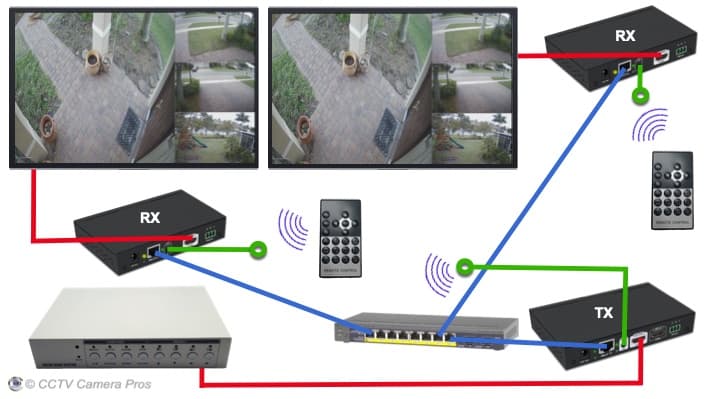
This is how it works.
- The red line at the bottom is a standard HDMI video cable that connects the video multiplexer's HDMI output to the HDMI input of the HDMI over IP transmitter (TX).
- The RJ-45 Ethernet port on the TX is connected to one of the ports of the network switch.
- Two HDMI receivers (RX) are connected to the same network switch and both are configured to receive the HDMI video signal from the same transmitter.
- The HDMI output from each receiver is connected to a TV monitor.
- The multiplexer can be controlled from either TV location because each receiver can transmit commands from the IR remote control back to the multiplexer.
Here is an installation diagram that shows how an analog CCTV camera can be directly connected to a TV / monitor.
This solution ONLY works with analog CCTV cameras. It will not work with any HD BNC camera.
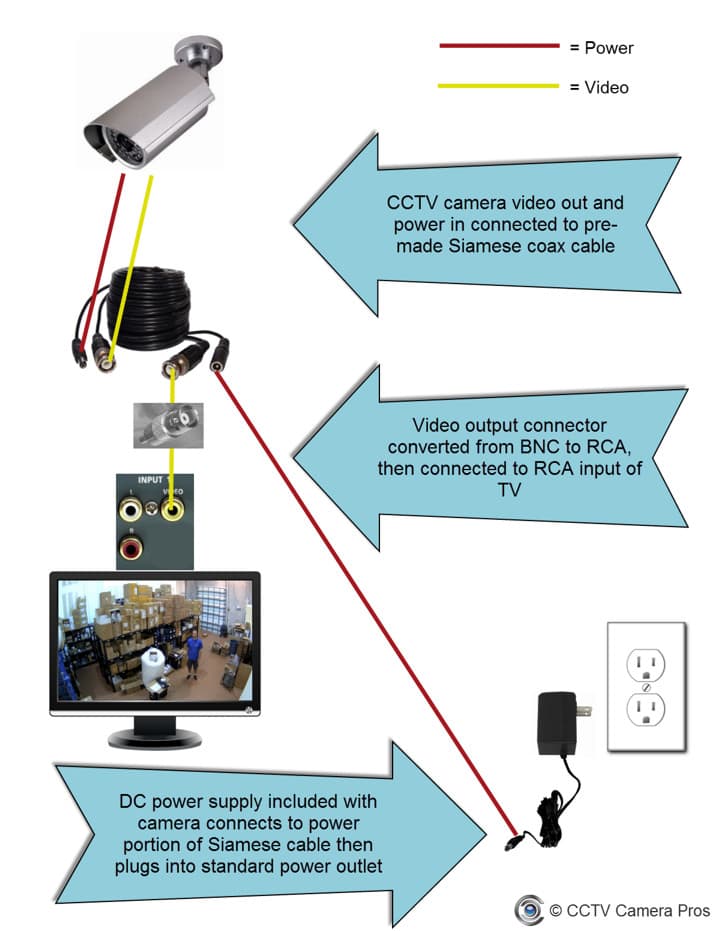
This is how it works.
- The CCTV camera video out and power in connected to a pre-made Siamese security camera cable. Cable cut from a spool of RG59 Siamese cable can also be used. Siamese is used in BNC security camera applications to run both video and power to / from cameras.
- Because both video ends of the cable has male BNC connectors, the TV side must be converted to an RCA male connector so that it can plug into the female RCA input on the TV. You can use this BNC to RCA connector.
- The 3.1mm power plug connects right to the DC power supply that is included with the camera and the power supply plugs into a standard 110 power outlet.
- When the user wants to view the live video from the security camera, they just select the video input of the RCA in that they used and video is displayed.
- Optional and explained below - If the user wants to also hear audio on the TV, they can connect a stand alone audio surveillance microphone to one of the RCA inputs of the TV.
Below is a list of equipment that was used in the above diagram.
Connect Surveillance Mic to TV Audio
If you also want to hear audio surveillance in addition to the live security camera view on you TV, the below diagram shows a
surveillance microphone can be connected to your TV. This is optional to use.

If you want to connect an HD security camera to a TV, you need to use a BNC to HDMI converter. This setup is applicable to the following HD security cameras that use the same coax cable as analog CCTV cameras: AHD, HD-TVI, and HD-CVI, 720p through 4K resolution.
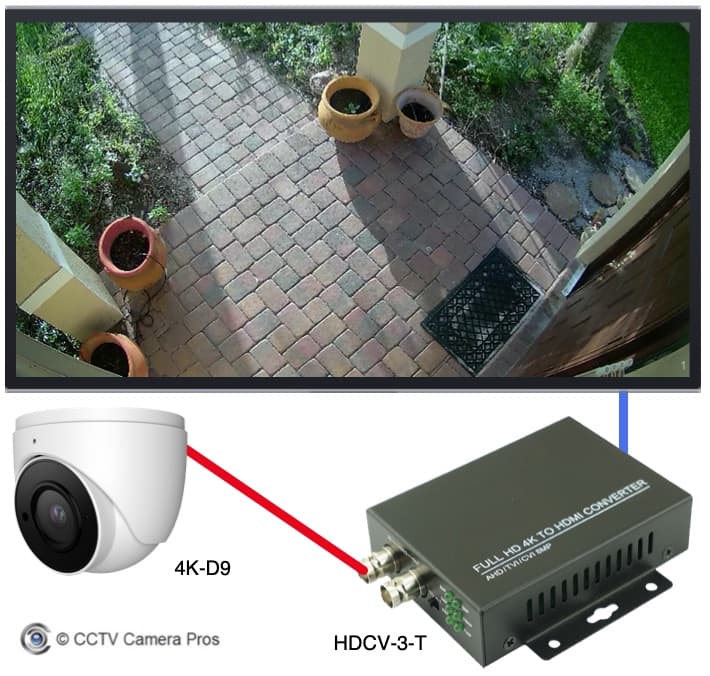
In this installation diagram a
4K BNC security camera is used. However any of these HD security cameras are also supported. This is how it works.
- The red line represents the coax cable that connects the BNC output of the camera to the BNC input on the HDCV-3-T BNC to HDMI converter. Just like the analog CCTV installation above, this can be pre-made Siamese cable or cable cut from a spool of RG59 Siamese cable.
- The blue line represents the HDMI cable that connects the HDMI output of the HDCV-3T to an HDMI input on the TV.
- To see a live view of the camera, just switch to that HDMI input using the TV remote.
Related Articles
Here are some additional articles that you may be interested in.
Related Video Surveillance Equipment
Article Thumbnail


Author Info
This article was written by
Mike Haldas, co-founder and managing partner of CCTV Camera Pros. Questions about this article can be directed to mike@cctvcamerapros.net.
|











